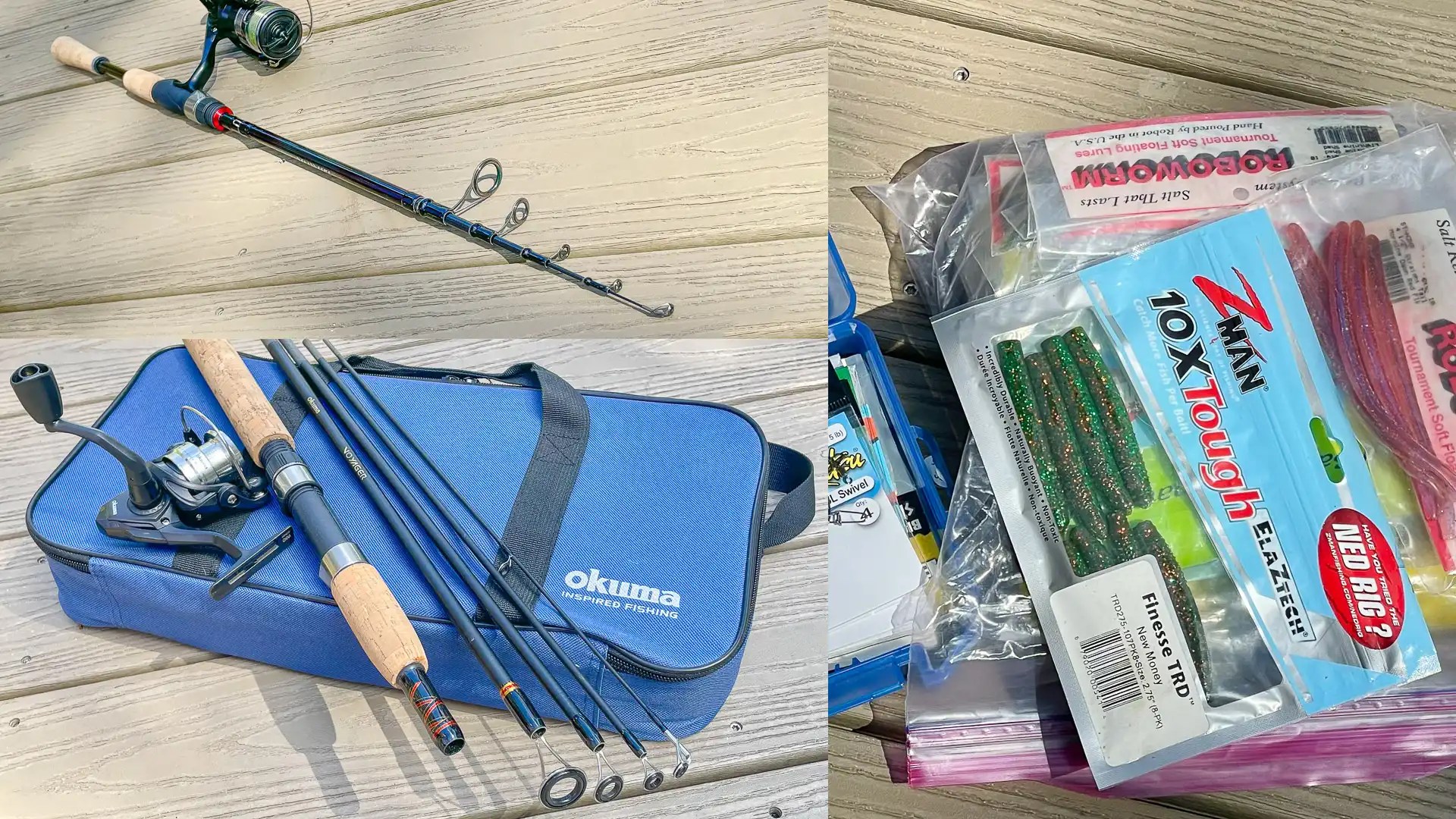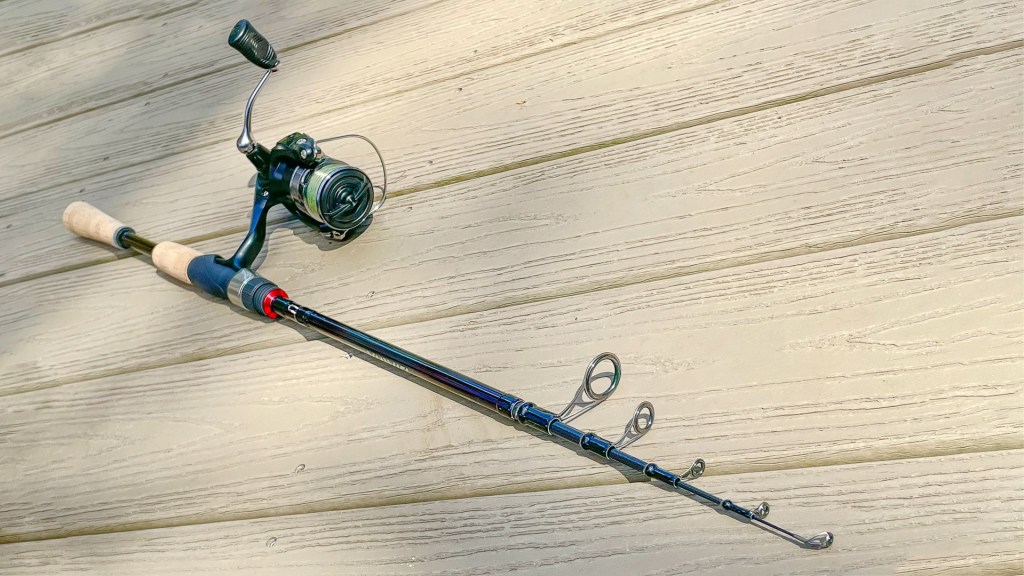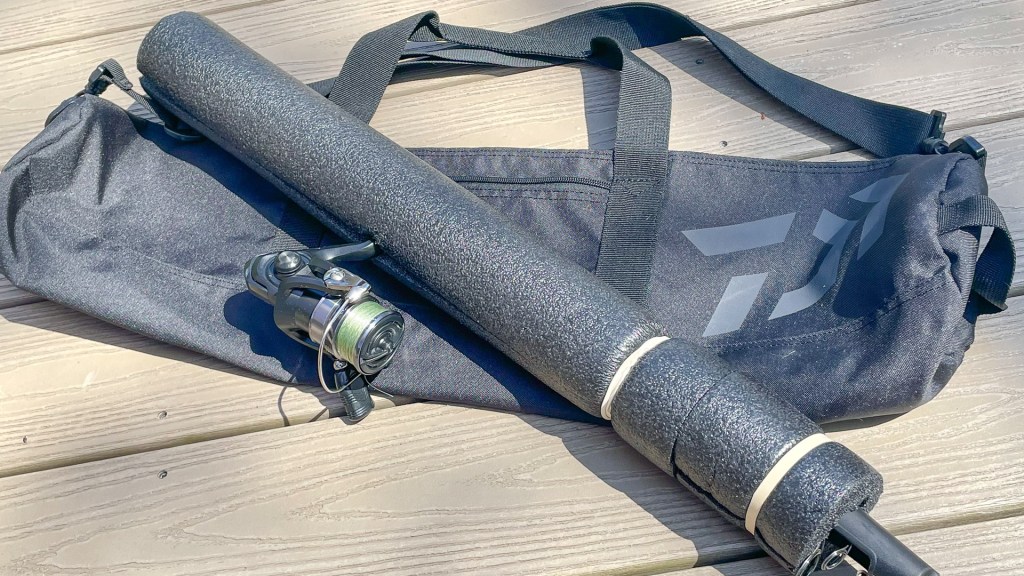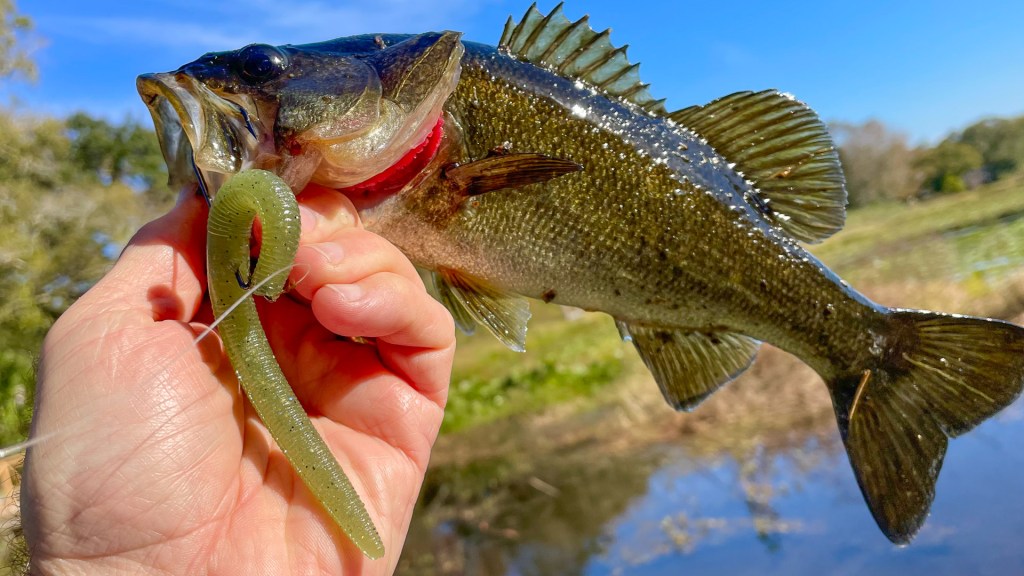
So often we find ourselves pondering the potential of unexpected waters we encounter en route to or amid some nonfishing-related activity. Other times, we pack for excursions that leave no room for transporting full-size fishing rods.
Whatever the limiting reality, nothing frustrates an angler like staring at fish you know you could catch if only you had that rod and reel. Bluegill clustering around a dock, largemouth bass patrolling shallow vegetation, trout feeding in slack-water pools behind stream boulders — the scenarios are many, but the solution is simple.
You need a travel combo. Baitcasters are fine if you’ve mastered the revolving spool design, but a spinning reel is the most user-friendly.
A reel is a reel and, with the exception of a spinning reel’s collapsible handle, you transport it as is. Rods, however, require more space and logistical consideration.
I can say from experience that sticking even one full-size fishing rod into a family vehicle full of luggage, pets and often territorial relatives can become an exercise in frustration, as well as a risk of tip or guide damage. And forget carrying a rod rigged with a hook or lure — that’s a recipe for disaster.
Car-top rod holders offer one option, but that’s another expense and a little extra work to secure the container to a vehicle’s luggage rack. Similarly, lockable rod cases enable you to transport full-size outfits by plane, but you still have to make sure the vehicles at your destination can accommodate the size.
Ultimately, every angler’s rod and reel arsenal should include at least one travel rod. This provides the convenience and versatility that keeps you ready to capitalize on every angling opportunity — expected or not.

Types of rods
Travel rods can be divided into two main categories.
Telescoping – Multiple segments collapsing into one another extend with a simple flick of the wrist or a measured pull. I’ve been fishing with a 7-foot, 2-inch medium Daiwa Travel Combo spinning outfit for a year, and I like its blend of convenience and performance.
Make sure you align all the guides (hold the rod upside down and look down the line) before snugging the sections in place. If any section skews to one side or the other, hold it by the base of the guide — never the eye — and smoothly adjust.
When snugging each section, don’t overdo it. Tighten too much and you could find your telescoping rod has permanently become a full-size rod.
Multipiece – Kind of the LEGO version, these kits divide a rod into a handle and four sections. The tapered pieces come together pretty intuitively, and the holes and bases only fit in one order. That said, for assembly efficiency — especially with young anglers — write the assembly order on the base of each piece. (When assembled, the base sections are concealed inside the next section, so no one’s going to know, right?)
For close-range work, I use a four-piece, 6-foot Okuma Voyager rod kit. This one wraps a soft-sided canvas case around an interior foam block with spaces for the rod, reel and a small tackle tray.
These rods require a little more time to assemble than simply extending a telescoping rod; however, if you buy quality, performance should be comparable. The biggest consideration is response time.
Say you come across a little footbridge and the bluegill are stacked in the shade line. Maybe you’re strolling along a stream and you come across a picturesque pool with trout slurping bugs. That telescoping style will get you in the game more quickly.
Anglers with more budget and/or greater performance needs might want to consider the St. Croix Triumph travel spinning rods, with 5-foot, 6-inch ultralight to 6-foot, 6-inch medium-heavy four-piece models, or the St. Croix Avid Tech travel spinning rod family, which offers 6-foot, 6-inch medium to 7-foot, 6-inch medium-heavy options.
I can carry plenty of soft plastics in a ziplock bag tucked into one of those travel cases, while a small Gamakatsu G-Case with a selection of hooks, drop-shot weights, Ned heads, ball-head jigs and Gamakatsu hooks goes into checked baggage.
Other options
Mini models – The Pen Rod (Amazon, Walmart, etc.) — not to be confused with Pure Fishing’s Penn rods — may look gimmicky, but a miniature telescoping fishing outfit that literally fits in a jacket pocket or tucks into your waistband is worth considering. Another option — the ProFISHiency Pocket Combo Deluxe Travel Kit.
Two key points here: First, you’re not going to have the casting distance and/or leverage you’d have with a full-size travel rod. That said, spooling with braided main line and adding a fluorocarbon leader will boost your casting and fish-fighting abilities.
Hand line – There are lots of versions here, from the hand-held spool of Caribbean origin known as a Cuban yo-yo to smaller homemade versions. Wrapping line around any solid holder, from a soup can to a stick or wooden dowel, is as bare-bones simple as it gets. That said, this compact, low-budget option provides a legitimate fish-catching opportunity — and a fun kids’ craft project.
Several years ago, I made a mini hand line from a 35mm film canister. I tied 6-pound monofilament to the container, secured the knot with a drop of superglue, wrapped about 20 feet of line and secured the tag end with a rubber band.
Removing the lid, I stored spare hooks and split shots inside. This is obviously a shallow-fishery deal, but it’s an easy option for backpacks, pockets, etc., and a practical tool for docks, low pedestrian bridges, etc.
It’s hard to find film canisters these days, but an empty thread spool works. If your spooling item has a flat top and bottom edges, you’ll want to create a lip on both ends to keep line from slipping off. I used strips of tightly gripping electrical tape.

Organizational details
Consider these points when planning a trip with your travel rod.
What can fly – The Transportation Security Administration (TSA) will allow you to carry travel rods (and reels) on commercial flights as long as the container fits in overhead luggage or under the seat. You can also carry your soft-plastic baits on the plane, but hooks, tackle, pliers, tools and knives must be transported in checked baggage.
Doubling up – My Okuma Challenger kit checks all the boxes of compact organization and lightweight portability. But when I’m flying or on a hike, I’ll bind the Challenger’s rod pieces (see Rod Binders) and tuck them into the Daiwa Travel Combo’s bag so I can easily carry both rods in just one place.
Keep it safe – While the Okuma Voyager’s foam padding keeps the rod pieces safe, my Daiwa Travel Combo comes with a plastic tip cap that covers all of the guides when the rod is collapsed. For further protection, I trimmed a piece of a pool noodle to fit and cut a slit from the outside edge to the small inner hole. This allows me to slip the noodle over the rod’s lower section, which holds all the extendable pieces.
For the tip and guides, I used a shorter piece and widened that inner hole to accommodate that tip cap. This adds a little peace of mind that my travel rod will survive the rigors of TSA screening and overhead baggage
Keep it tight – Also, rubber bands are your friend. No slight to anyone’s tackle tray design, but latches occasionally come undone. Maybe it was the sharp impact of a bump or drop; maybe you just didn’t close the tray as securely as you thought.
In any case, wrapping a rubber band around the tackle tray prevents accidents. One simple addition equals peace of mind. (Rubber bands eventually break, so add a couple of spares to your tackle tray.)
Rod binders –If you use two or more travel rods during any outing, consider that keeping them together simplifies transportation, whether that’s walking, biking or paddling to your fishing spot. This is less critical on motorboats or fully rigged kayaks with more space and rod holders, but casual or impromptu fishing missions will definitely benefit from the safety and security of well-managed rods.
Velcro strips, either homemade or manufactured products like the Calcutta Rod and Reel Storage Strap, offer simple security. I’ve also used rubber bands and elastic hair bands, but these are mostly limited to the handle ends. For the most diverse binding option that works on both ends, pipe cleaners or twist ties provide quick, secure binding.

Keep it together
Ziploc bags may have been made for food storage, but they’re an angler’s best friend — especially when you’re traveling light. Some soft plastics come with zippered pouches, but tucking several bags neatly into a gallon-size food storage bag provides easy, see-through access and keeps a bunch of smaller containers from sliding and spreading within your travel case.
For extended fishing missions, I like to carry my spare tackle and baits in an AFTCO Urban Angler Backpack. Made with a spare rod holder and a 1.5-liter hydration unit, this low-profile backpack is a good fit for the times when I’m most likely to be using a telescoping and/or multipiece travel rod.






